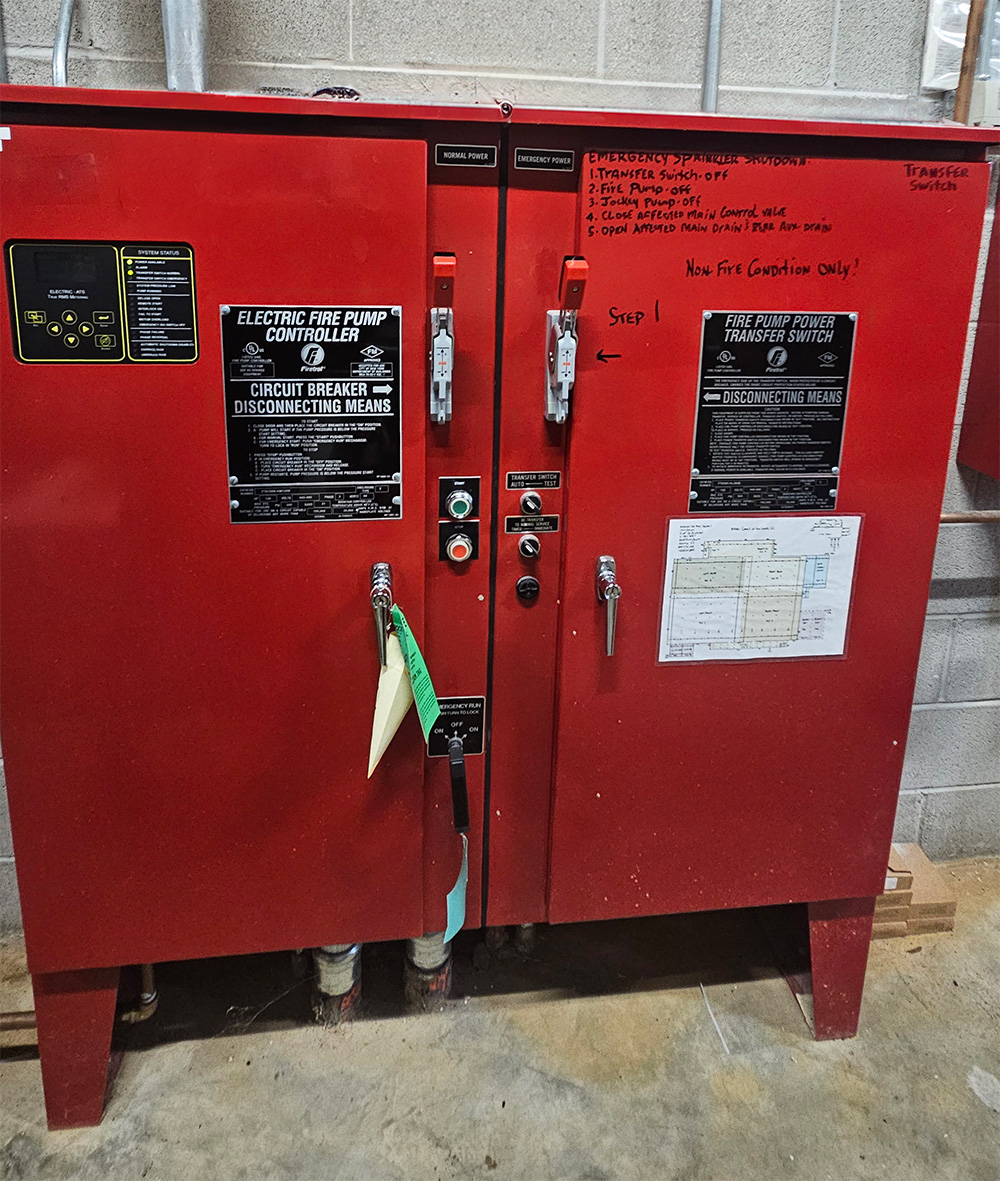Fire Pumps
Power Up Your Fire Protection
A fire pump is an essential component of a building’s fire protection system, designed to increase the water pressure in the fire sprinkler and standpipe systems, ensuring adequate water flow during a fire emergency. Typically installed in buildings where the local water supply cannot provide sufficient pressure to meet the demands of the fire protection system, a fire pump is activated automatically when the system detects a drop in pressure, usually caused by the activation of one or more sprinkler heads.
Fire Pump Features

NFPA 25 Water Based System Inspection & Testing Frequency
NFPA 25, the Standard for the Inspection, Testing, and Maintenance of Water-Based Fire Protection Systems, outlines specific guidelines for how often various components of these systems should be inspected and tested to ensure they are in proper working condition. Below is a breakdown of the recommended inspection and testing frequencies for key components:
| Component | Inspection Frequency | Testing Frequency | Notes |
| Pump Operation (Diesel) | Weekly | Annually | Test: Run for 30 minutes under no-flow conditions weekly; full flow test annually. |
| Pump Operation (Electric) | Weekly/Monthly | Annually | Test: Run for 10 minutes (weekly) or 30 minutes (monthly) under no-flow conditions. |
| Pump House Conditions | Weekly | – | Inspection: Ensure adequate temperature, ventilation, and overall condition. |
| Pressure Relief Valves | Annually | 5 Years | Test: Full flow test every 5 years. |
| Fuel Supply (Diesel) | Weekly | Annually | Inspection: Check fuel levels weekly; test fuel quality annually. |
| Transfer Switches | Monthly | Annually | Test: Simulate power failure to test automatic transfer to emergency power. |
| Pump Alarm Devices | Weekly | Annually | Test: Ensure alarms for pump running, phase reversal, and other conditions are functional. |
Additional Notes:
- Visual Inspections: Should be performed regularly (monthly or quarterly) to ensure all components are in good condition and ready for operation.
- Record Keeping: Document all inspections, tests, and maintenance activities, including dates, persons performing the tasks, and any issues found.
- Emergency Repairs: If any deficiencies are found during inspections or tests, immediate repairs are required to ensure the system’s reliability.
This chart provides a general overview based on NFPA 25. Local regulations, manufacturer instructions, and the specific design of the fire protection system may require additional inspections and tests. Always refer to the latest edition of NFPA 25 for the most accurate and detailed information.